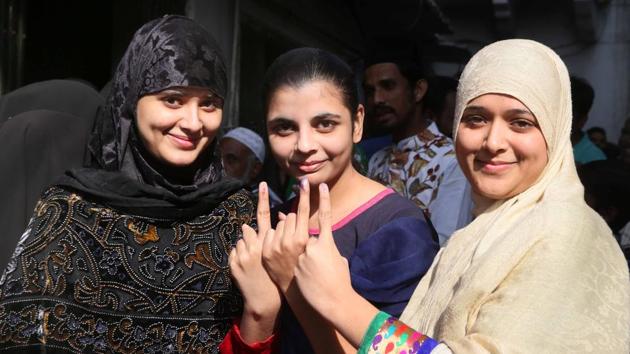Opinion | The race for PM office isn’t a done deal yet, writes Rajdeep Sardesai
There are a fascinating range of possibilities that lie ahead of us before the 2019 polls.
As the temperatures sharply dip in Delhi, the political heat is rising. With less than a hundred days to go before the Narendra Modi government seeks re-election, the signs of a creeping desperation to shift the narrative are visible: from a national farm income support scheme to an ordinance on Ram Mandir, to a triple talaq law, this is now a government looking for a potential game changer in the final stretch. So what are the fascinating ranges of possibilities that lie ahead of us?

The Modi-Amit Shah Plan A: A repeat of 2014 when the BJP won 282 seats on its own seems near impossible after the three Hindi heartland assembly defeats but the BJP’s leadership duopoly hasn’t given up hope yet. The belief that a Modi versus Rahul Gandhi presidential style contest can have only one winner is reason enough for the PM’s supporters to shape the storyline as the ‘karmayogi’ ‘kaamdar’ versus the privileged ‘naamdar’. With Uttar Pradesh remaining the key battleground, a Hindu mobilisation to counter a prospective Dalit-Yadav-Muslim caste-community realignment is being nurtured through a parallel mandir-centric strategy.
The Modi-Shah Plan B: The more likely best-case scenario for the BJP’s power couple is for the party to at least touch the 220 mark with new areas of growth being feverishly scouted in the eastern corner of the country to compensate for near-certain losses in the northern and western regions. With the BJP’s present allies offering limited benefit, the search is also on for fresh partners: anti-Congress regional potentates like a K Chandrashekhar Rao (KCR), a Naveen Patnaik, a Jagan Reddy, are all seen to be part of a conceivable NDA 3 universe.
The RSS Plan C: Should the BJP fall below 200 seats, the sangh parivar leadership could consider the seemingly unthinkable: a BJP-led government but without Modi at the helm. That may be a preferable option for those who seek a less centralised, more consensual leadership style. In this context, Nitin Gadkari’s recent remarks calling for accountability in defeat are relevant. Gadkari has a precious quality for a politician in this coalition era: the ability to maintain friendships cutting across party lines. That he is from Nagpur and proximate to the RSS sarsanghchalak is no coincidence. Close familial ties do matter in an organisation as tightly knit as the brotherhood in saffron.
The Rahul Gandhi Plan A: Unlike Modi-Shah and despite the chorus within of “Rahul for PM”, the Congress president seems to have no illusions about the limitations of the organisation he leads. Having been reduced to 44 seats in 2014, even a triple-digit figure would be seen as evidence of recovery. A Congress party in the 100-120 range could push the BJP below the psychologically crucial 200-seat mark and make a Modi prime ministership unlikely. That it seems is Gandhi’s priority for now as he seeks to build on the recent assembly gains by forging statewise strategic alliances.
The Rahul Gandhi Plan B: If the Congress crosses the 140-mark by some dramatic last-minute push akin to the 2004 elections, then the BJP is in danger of slipping below the 175. Should this happen, the Congress may be forgiven for entertaining leadership aspirations of its own. In a fluid scenario, Gandhi may still not want the prime ministership for himself right away but prefer his own Manmohan Singh equivalent, either within or outside. The prime qualification for such a post is obvious: a candidate who will accept the supremacy of the first family over decision making (notice the encomiums that Sharad Pawar showered on Sonia and Rahul Gandhi recently).
Federal Front Plan A/B: The last time a non-Congress, non-BJP government was forged at the Centre was in 1996 when the two main national parties won 301 seats between them. If that combined tally dips now to below 300, as it did in 2004, then it opens up the possibility of regional satraps setting the agenda. These ambitious leaders may find it tough to agree on a consensus candidate among themselves but that alone may not be enough reason to prevent them from aiming high. Which might explain why KCR — from a relatively small state like Telangana — is piling up frequent flier miles while meeting like-minded state chieftains. And which perhaps justifies the growing belief that the race for 7 Lok Kalyan Marg is no longer a done deal.
Post-script: If Kaun Banega Pradhan Mantri is the flavour of the new year, rewind to 1997 when soon after Deve Gowda lost his prime ministership, a number of contenders emerged. Among them was the Tamil Maanila Congress chief, GK Moopanar. When we asked the notoriously reticent Moopanar why he refused the top job, he said: “My Hindi is not good enough to lead the country!” Of such unexpected explanations are political futures determined. Which is why it maybe best to set aside the endless speculation and just wish everyone a Happy News Year!
Rajdeep Sardesai is senior journalist and author
The views expressed are personal






